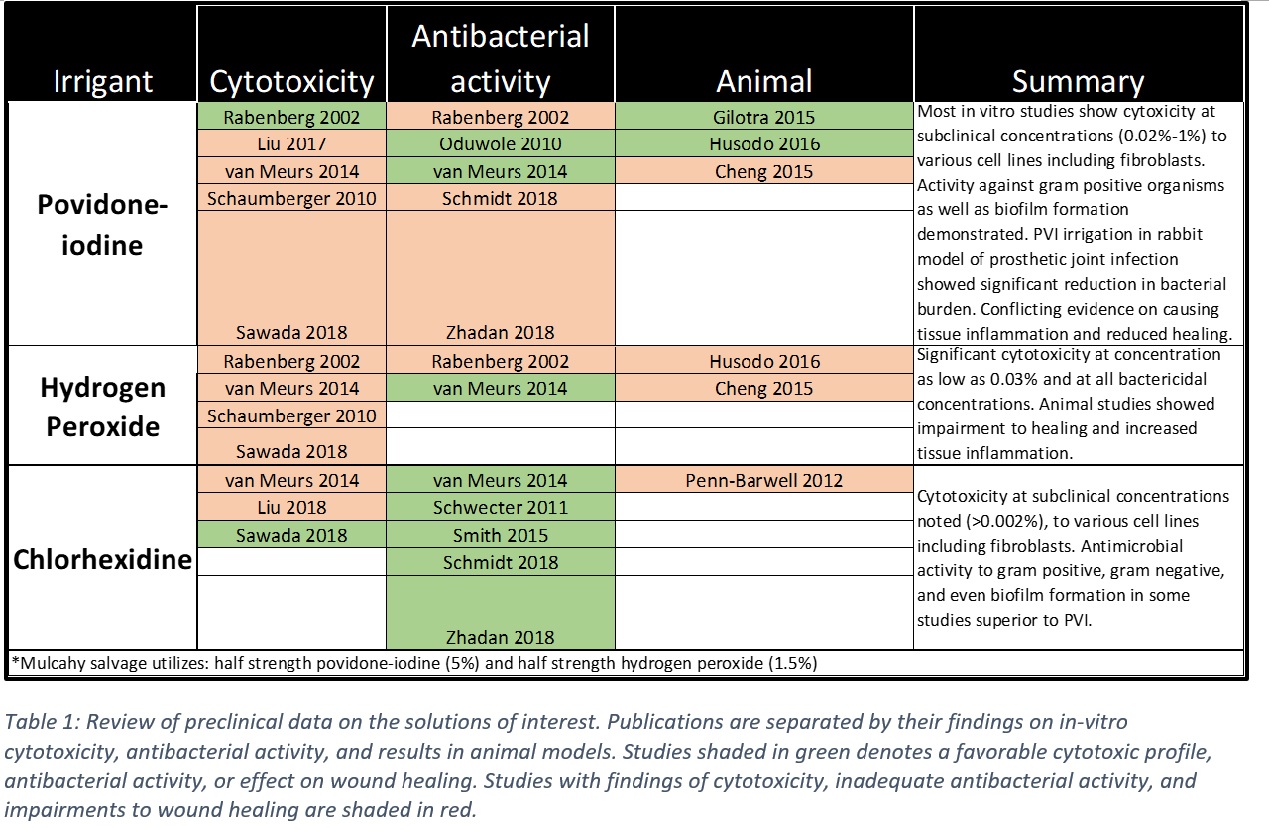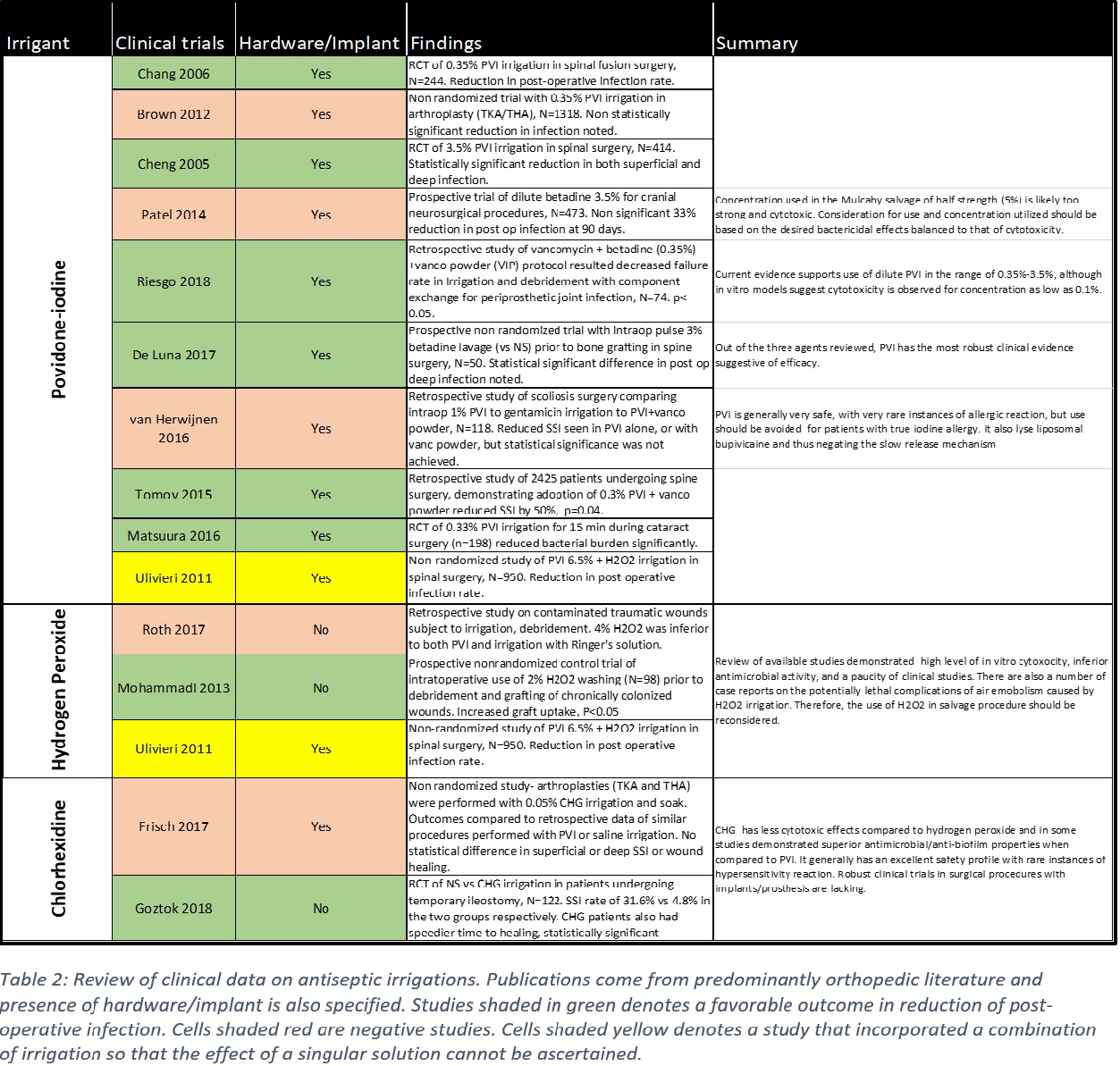The Mulcahy Salvage revisited: a critical appraisal of antiseptic irrigation
Shu Pan, MD, Ricardo Munarriz, MD, Maria D'amico, BA
Boston Medical Center, Boston, MA
Introduction/Background: Penile prosthesis infection is a devastating complication to both patients and surgeons. It is most commonly managed with explantation (82.7%), which results in penile fibrosis and loss of penile size. The Mulcahy salvage protocol was introduced in 1996, consisting of: explantation, irrigation with antibiotic solution, hydrogen peroxide (1.5%), and betadine (5%), followed by reimplantation. The rationale for the irrigation solutions and concentrations has never been challenged nor investigated. Objective: To critically evaluate the cytotoxic and antimicrobial effects of antiseptic wound irrigation, and to derive an evidence based recommendation on the ideal concentration of clinical use. Methods: A literature review was performed to investigate the effects of the different irrigation solutions: povidone-iodine (PVI), hydrogen peroxide (H2O2), and chlorhexidine (CHG). PUBMED search was used, focusing on publications from the past 15 years. Resultant articles were categorized according to their design, critically evaluated for cytotoxicity, antimicrobial activity, effects on wound healing, and clinical efficacy. Results: Most in vitro assays demonstrate cytotoxicity of all three solutions at subclinical concentrations to cell lines including fibroblasts, table 1. H2O2 appeared to have the most harmful profile out of the three. Activity against gram positive organisms as well as biofilm was observed in both PVI and CHG. Robust clinical evidence exists for dilute PVI irrigation, demonstrating a reduction in postoperative infectious complications, table 2. Conclusion: Urologists should consider utilizing dilute PVI irrigation during salvage procedures, which has been used with success in other surgical disciplines. Use of H2O2 should be discouraged, given its potent cytotoxicity and lack of clinical efficacy. CHG may be a viable alternative but requires further evaluation. 

Back to 2019 Abstracts
